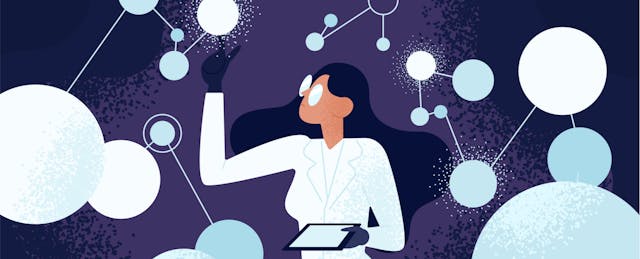For data lovers, the release of fresh census data probably feels like an extra Christmas every 10 years. But for K-12 students, chances are it’s not quite the cause for celebration. So how do you make that data accessible, relevant and maybe even fun?
If you’re the U.S. Census Bureau, you call in other students—like a team of aspiring data scientists from American University.
The group of four graduate students is creating a free app to help teachers build data literacy skills in the classroom. They’re working hand-in-hand with the Opportunity Project, a program led by the federal Census Open Innovation Labs that brings technologists and community advocates together to solve problems.
“Building this app and seeing what other schools are doing reinforces how much education is a community effort,” says Haiman Wong, an American University data science graduate student. “It’s been great seeing how teams can work together toward one goal, and that is certainly something we need a lot more of.”
American University is one of 10 universities working with census data as part of the Opportunity Project’s fall technology development sprint, which focuses on decennial data accessibility. December will mark the end of the 12-week program, and students will present beta versions of their app at a conference for participants.
Students built the app using R, an open source programming language. The app opens to reveal an interactive map with data from all 50 states. Students are introduced to data-science terms and asked to answer questions based on the map, which Wong calls “knowledge checks.”
A second tab generates charts based on income, ethnicity and other population data. It’s where students can practice going from simply viewing data to analyzing and interpreting. The team is building out a third section of the app to include resources where students and teachers can explore more about the census and the field of data science.
“It’s a low-stakes, fun environment where students can play around,” Wong says.
The Opportunity Project has yielded nearly 150 open data tools created by more than 1,500 participants to date, according to the U.S. Census Bureau.
The agency connected participants with K-12 education experts before coding ever began. Wong says her team realized through those conversations that high schools and elementary schools had plenty of data-literacy resources to draw from. It was middle school that experienced a gap.
“That really motivated our focus toward middle school teachers and students,” Wong says. “We want students to think about data and be able to take action on that data."
Daudou Shi, a data science student and Wong’s teammate, says their app is taking aim at another challenge in getting younger students interested in data.
“Sometimes it’s too boring for middle school students,” Shi says. “Our project helps teachers to motivate their students and … helps with learning simple statistical methods.”
Richard Ressler, associate director of the university’s Data Science Programs and senior professorial lecturer, says their Census Bureau partners have suggested that the app could be a useful data-literacy tool for teachers at any grade level.
“Our goal is to get these middle school students curious and get them asking questions,” Ressler says. That has required the American University team to cycle through the entire data science process during the sprint.
“They are working through all the steps: how are we going to measure it, shape it, build a model, all the way to deploying it,” he adds. “It’s a very nice experience of what they're going to be doing for the foreseeable future.”


